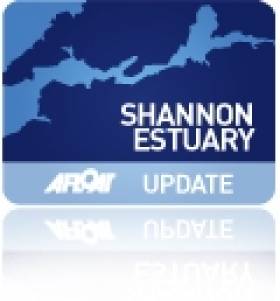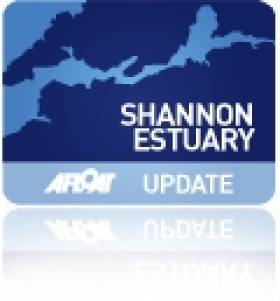Displaying items by tag: Aughinish Alumina
#ShannonEstuary - A private meeting between Taoiseach Leo Varadkar and management of the Russian-owned alumina producing plant in Askeaton, Co Limerick, was held yesterday as “concern” mounted over the plant’s continued operations, and the future of its 450 workforce.
As The Irish Times reports, Aughinish on the shores of the Shannon Estuary, is the largest alumina refinery in Europe.
Owned by Rusal, the Limerick facility is facing an uncertain future, after severe trade sanctions were imposed by the US Treasury Department on Rusal’s owner Oleg Deripaska, on April 6.
Mr Varadkar confirmed he met with Aughinish management representatives Sean Garland and Damien Clancy in Limerick on Friday.
Mr Varadkar said: “I’m aware of the situation. I spoke to Sean Garland on the phone last week and I met him this morning. The government are very very much aware of the risks, and we’ll do everything we can to assist the company, and to ensure that it can continue to operate as normal.”
To read more on this development, click here.
Afloat adds that bulk-carriers for example Arklow Mill (see full view photo) of the 'M' class sisters are regular callers to the mid-western industrial plant.
In addition the Irish flagged member of the 50 strong Arklow Shipping fleet that is shared with a Dutch division (see newbuilds update) has involved Arklow Mill export the finished product, alumina, for further processing through smelting.
As previously reported the bulk-carrier has called to Grundartangi, a smelting plant located north of the Icelandic capital of Reykjavik.
Former Irish Lights Dun Laoghaire Harbour Based Buoy-Tender Sports New Shannonside Colours
#BuoyTender - Puffin, a former Commissioners of Irish Lights (CIL) buoy-tug tender which spent a career of almost three decades in Dun Laoghaire Harbour has recently been spruced up in new colours for current owners Shannon Workboats, writes Jehan Ashmore.
Puffin was very much a 'workhorse' for Irish Lights Dun Laoghaire based marine depot from where the vessel towed countless buoys back and forth to the various anchored 'lighthouse' tenders among them Atlanta, Granuaile and Gray Seal.
Arguably such workhorses can be easily forgotten or disregarded in a task perhaps perceived as mundane yet the role of the Puffin was an integral component in ensuring the operations of CIL.
The work of Puffin was vital bearing in mind the countless aids to navigation that dot around our island to assist safe passage not just to seafarers and ship cargoes but also passengers and leisure users too.
The Commissioners had Puffin custom-built from David Abels Boatbuilders of Bristol in 1984. It is understood that the small vessel of 12.4m long, beam of 3.8m and 1.5m draught was the last vessel launched from the Albion Dockyard.
When she was sold in 2011, the 24 gross tonnes vessel made her repositioning delivery voyage from Dun Laoghaire to the Shannon Estuary. The first leg to Baltimore took more than 30 hours and from where she took on bunkers before continuing on the final 20 hour-leg to Foynes.
She alongside Shannon Workboats fleetmate Islander are 'lines-boats' contracted to Rusal Aughinish Alumina, the largest alumina processing plant in Europe. Both workboats provide assistance in transferring mooring ropes between bulk-carriers docking and departing the double berth jetty.
The outer 285m berth can handle 90,000dwt vessels at depths of 12.4 metres and the inner 180m berth is for 40,000dwt ships in waters of 11 metres.
Examples to the type of bulk-carriers both large and small calling to Aughinish Jetty as previously reported on Afloat.ie are the 2009 Japanese built Panama-flagged Aom Julia, the 76,596dwt which was discharging bauxite. On the adjacent berth the South Korean built Arklow Mill of 14,990dwt was loading alumina bound for Rotterdam.
The plant's production process involves extracting alumina from imported bauxite that is discharged at the jetty. Approximately 70% of the bauxite originates from Guinea in west Africa and the balance from Brazil. The alumina (totalling 1.924m tonnes in 2012) is discharged from the same jetty for export where it is processed again through smelting into aluminium metal.
The lighthouse vessels are now referred as aids to navigation tenders with the current vessel the 2000-built ILV Granuaile. The 2,635 gross tonne vessel continues to anchor within the harbour's western bight off the West Pier. Instead of the Puffin, the towage of buoys continues to be maintained by smaller sized tenders belonging to the ILV Granuaile.
On a few occasions each year due to Spring tides, this procedure is not required as ILV Granuaile can moor alongside the berth at CIL's joint administration and marine depot.
Among the other tasks Puffin was gainfully employed was in the towage of the larger navigational aids such as Superbuoys and Large Automated Navigation Buoy's (LANBY). In 2010 Afloat.ie reported on the last LANBY.
In addition Puffin was not exclusively confined within the harbour as she would be required to transfer maintenance personnel to the automated Kish Lighthouse and Muglins lighthouse off Dalkey Island.
Her aft deck can handle up to 5–tonnes capacity and has proved useful. For example she loaded dismantled parts no longer required within the structure of the Kish Lighthouse and taken to Dun Laoghaire Harbour.
Puffin not only retains her original name but also her port of registry – Dun Laoghaire which is certainly most unusual to see for a vessel that is not a pleasure craft or yacht.
With the removal of Puffin's former CIL livery of grey hull colour and buff funnel, which also applied to the lighthouse tenders, the last been in this guise was the 1970 built Granuaile.The 2,003grt vessel as previously reported on Afloat.ie serves as Ocean Seeker for Gardline Marine Services based out of Great Yarmouth on the UK's Norfolk coast.
The current 'Granuaile' sports a blue hull likewise to her former fleetmate... the Puffin!
London 2012 Weighs Anchor off World Famous Golf Course
#OLYMPIC SHIP - A 82,562 dwt dry bulk-carrier, London 2012, weighed anchor today having recently docked at the Aughinish Alumina jetty, on the Shannon Estuary, writes Jehan Ashmore.
The Liberian flagged vessel which has a draft of more than 14m had docked at Aughinish, one of six terminals operated by Shannon Foynes Port Co, near Askeaton, Co. Limerick. The facility is where large sized ships can reach by plying the deep waters of the mid-western waterway that has some 500sq km of navigable estuary.
Following completion of operations of London 2012 at the Aughinish terminal, which is the largest alumina refinery in Europe, the vessel departed the jetty dedicated to importing bauxite to the Russian owned RUSAL plant, and proceeded to anchorage beyond the mouth of the Shannon.
The 229m long X 32m beam vessel had anchored some 3 nautical miles offshore of Ballybunion. The west Kerry venue is another place strongly associated with sport through its world famous golf course, situated on a spectacular stretch of coastline overlooking the Atlantic Ocean.
London 2012 and her sister Beijing 2008, belong to a fleet of approximately 70 vessels, totalling a capacity of 8 million deadweight tons (dwt) and are managed by Tsakos Columbia Shipmanagement (TCM) S.A. of Greece.
The Athens based TCM was only established in July 2010, as a joint venture between Tsakos Shipping and Trading S.A. and Schoeller Holdings Ltd, the owner and operator of Columbia Shipmanagement Ltd.
No doubt her Greek owners will make an opportunity for a vessel to continue in the Olympic spirit by sporting the name Rio de Janeiro 2016. As for golf fans, they too can look forward to the return of the sport in these Games.
Cargo Ships Collide in Shannon Estuary
The second vessel, the 93-metre Danish-registered Tina Theresa, was leaving the anchorage to meet up with the Shannon estuary pilot when the collision took place. The tanker was destined for Foynes Port in Limerick and was damaged along her starboard side but there was no hull damage.


























































